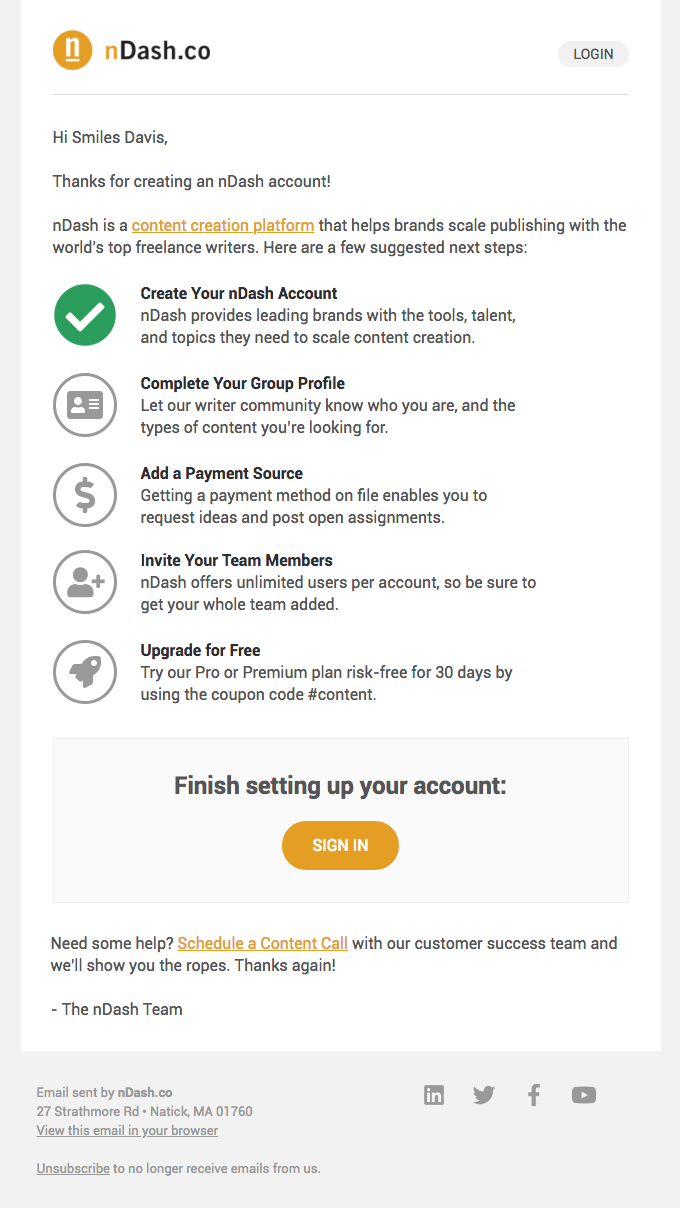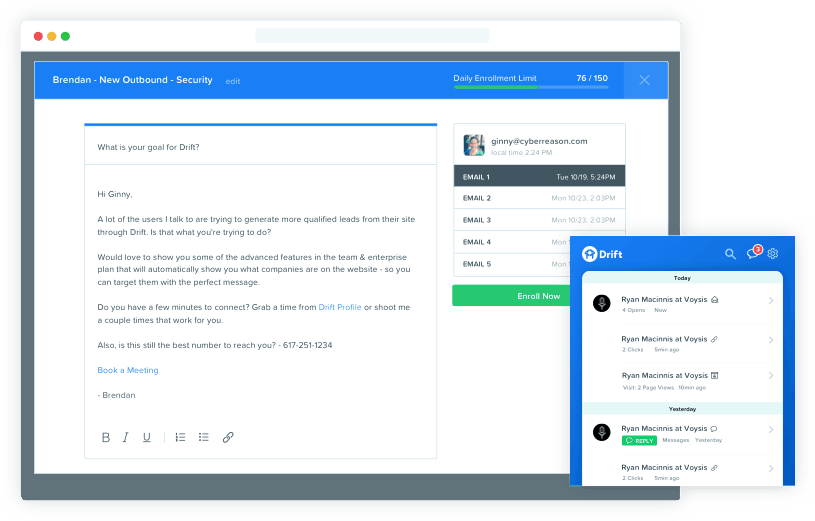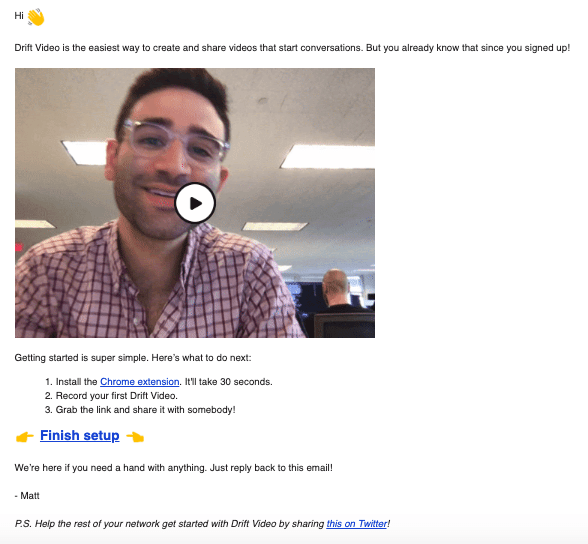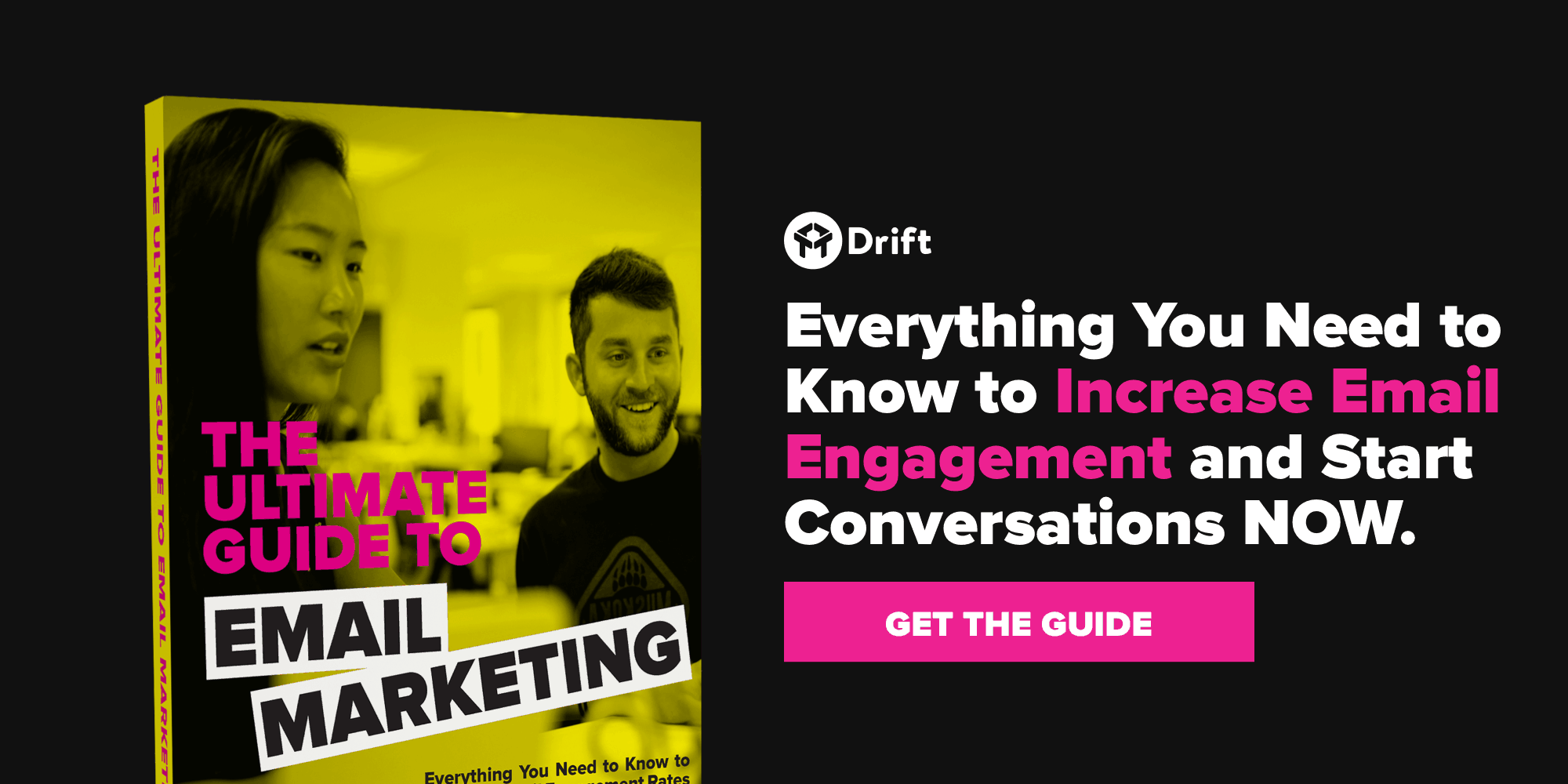
What is a Welcome Email?
Welcome emails are automated email marketing messages sent when someone subscribes to a newsletter, enroll in a free trial, or creates a new account.
Often, welcome emails are the first meaningful interaction between user and brand, something that can say a lot about what’s in store for this relationship.
When someone is new to your brand, that first interaction is a big deal. Though a welcome email comes after that initial conversion, it’s the first chance you have to show that you can fulfill the promises laid out on your website.
Welcome emails can be used in a variety of different ways—be it to deliver a video message, present a special offer, or just let the recipient know what to expect from this new relationship.
In this article, we’ll look at some examples you may want to use as inspiration for your own welcome email templates, and talk best practices.
Why Welcome Emails Matter
Here’s the thing, if someone signs up to receive emails, they already like something about your brand. People don’t give out their emails to just any business—these people are hot leads that demand some nurturing.
Open rates for welcome emails hover around 50%, which is considerably higher than your average targeted message. Yet, over 50% of brands don’t automatically send welcome emails to new subscribers, despite the fact that nearly 75% of customers expect to receive them.
With that in mind, it’s clear that you can’t sleep on rolling out the welcome wagon for new customers.
Whether you’re introducing a newsletter, a loyalty program, or helping users get started with a new online tool, a good welcome email should do a few basic things.
- Introduce your brand’s unique value proposition and personality
- Give people an idea of what to expect–how often you’ll send emails and why
- Present an opportunity to take the next steps
- Offer a short tour of your product or highlight member benefits
- Kickstart an onboarding flow, if applicable
In these next sections, we’ll move on to some examples of welcome emails done right.
Acknowledge the Sign-up
A frequently used tactic is to send a simple welcome note that acknowledges the opt-in and encourages users to get to know the brand.
It’s short, sweet, and proves that adding a little humanity is as easy as saying “Thanks.” Instead of writing a full-blown newsletter, invite users to get to know the brand and take a look at your products.
Welcome Emails Set Expectations
This example below is used to welcome new account sign-ups, letting them know what kind of emails to expect from the brand moving forward. Based on this initial greeting, we’ll assume that future newsletters will incorporate humor, show off products, and reinforce the company culture.
And, by including an offer in this initial email, new account holders can see that the company already proves that they intend to keep up their end of the bargain.

Show Off Your Personality
Away’s welcome email specifically targets users who signed up for updates while scrolling through social media. Because subscribers are signing up through social media, rather than visiting the site first, Away makes a point of letting newcomers know what their brand is all about.
It’s another short introduction that does a nice job making the acknowledgment while infusing a dash of personality into the copy.
Away’s approach isn’t the only way to introduce your brand. At Drift, we opt-for a plain-text, conversational approach and our emails reflect that core value–relationship building.
This welcome email boast a 75% open rate and though it’s automated, it aims to drive responses.

Provide Clear Next Steps
You don’t want to make subscribers ask what to do next. If you offer a service (think food delivery, rideshare, etc.) you want users to get started using your solution right away. As such, make it easy.
Airbnb always does a great job connecting with customers, and this email is no exception.
The bold colors and graphics offer plenty of visual appeal, while the three-step process to get started lets subscribers know that they’re just a couple of short steps away from booking that dream vacation.

Highlight Core Features
Asana’s minimalistic design here gives new users a quick rundown of the features you can expect to find inside your new account.
What we like about this welcome email is it provides a very brief list of features, without going into too much detail so that new users don’t get overwhelmed with too much information at once.

Approach it Like a Checklist
Ndash just puts it out there, literally including the words, “important next steps” in the email. We like how they break the sign up process into a series of steps, checking each one off as the user progresses. It’s very clear what the user should do next, reinforced by the CTA at the bottom.
Still, if subscribers need some extra help, they can schedule a call for live support.
The brand’s no-frills approach doesn’t provide that email design eye-candy we all love, but they leave no room for confusion–which is an effective way to build trust with first-time users.

Create a Welcome Email Series
If you’d like to dive deeper, consider trying something a bit different, a welcome email series. This approach breaks down the welcome into a drip campaign, covering a few related concepts in one email. The welcome series is a natural choice for a SaaS product or any account that offers access to a tool. These drip sequences can be particularly powerful if you have a complex product, or one that requires a bit of help to get your new customer active and regularly using the product.
Drift Sequences can also be used to build welcome series aimed at shortening the sales cycle. You’ll notice in this example here, the first email asks users about their goals and includes a link to live chat so that new leads can connect with a rep directly.

Deliver that Incentive You Promised
Think about how you encourage visitors to sign up for an email list. Do you offer an incentive in exchange for their email?
If you do, your welcome email absolutely MUST deliver that incentive ASAP. Otherwise, you risk frustrating users and eroding your trust before the relationship even starts.
Here’s an example from Fonts.com. What we like about this is, it’s very straightforward—thanks for signing up, your free fonts are below.
The brand also does a good job explaining how often subscribers can expect to hear from them and touches on what types of content they might send out, be it a special offer or an update on a new font family.

Don’t Forget About the Subject Line
As with any email, the subject line is a big deal. As a general best practice, welcome email subject lines should be upfront about what’s inside, and they should serve as a reminder for why the recipient subscribed in the first place.
7 Core Ingredients of Any Good Welcome Email
As mentioned, welcome emails can take many different forms and can be applied to any type of business. However, it doesn’t matter if you prefer to welcome new users with a series of onboarding videos, a simple “Thank you,” or an intro to the brand, some things apply across the board.
With that in mind, here are seven elements that belong in every email campaign.
- The “From” matters. Be sure to use a sender name that the recipient will recognize. yourname@brand.com is perfect. Bonus points for including a friendly picture in your profile—it’s all about adding a bit of humanity to a digital interaction.
- Personalize. Adding in the person’s name goes a long way. Even something like a “Hey, there, Sam!” adds equal parts relevance and friendliness to the equation.
- Create a Compelling Subject Line. Make it clear and attention-grabbing. If you’re offering an incentive, say so. Try something like “Here are the templates you requested” or “15% off your first order.”
- Remind users why they signed up. We all get a lot of emails, so even if the subscriber opted-in, they may need a quick refresh to jog their memory. In the subject line, reference the context—i.e. “Thanks for subscribing” or “Here’s your social media marketing report.” Inside the email, be sure to reiterate the benefits associated with membership, be it special offers, insights, or something else.
- Make sure you include a focused CTA. Whether it’s a directive to download or a simple “Check out our products,” don’t forget the CTA. People want to be told what to do next.
- Include social links. Beyond driving the more obvious actions like buying a product or setting up an account, getting users to follow you on social media gives you another opportunity to connect with your audience.
- Make sure users know they can opt-out. Maybe the user sees that this new relationship might never work out. Maybe they don’t like your emails. Maybe they’re waiting to see if you can deliver the value promised. It doesn’t matter. By presenting an opt-out option, you put users at ease and show that you’re not trying to trick people into receiving emails. Additionally, when you make it easy to unsubscribe, you’ll see fewer spam reports, which plays a big role in deliverability.
Wrapping Up
The point is, don’t discount the power of a good introduction. Making an effort to welcome new subscribers might seem like a small gesture, but it stands to set the tone for how customers interact with your brand down the road.
Your welcome email can take several different forms; however, the most important thing you can do is engage your audience in a timely, relevant manner.
Curious and want to learn more? Get your copy of The Complete Guide to Email Marketing.





